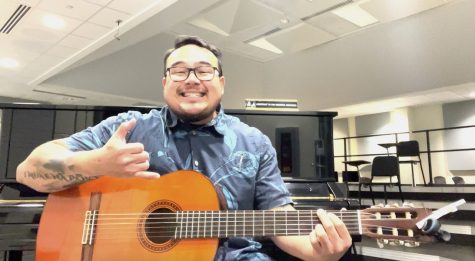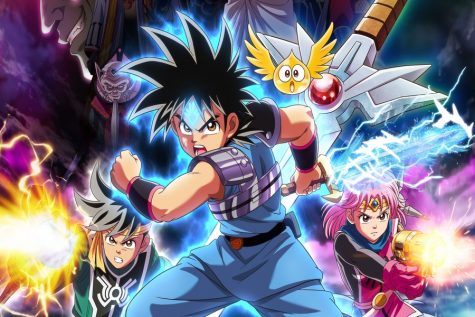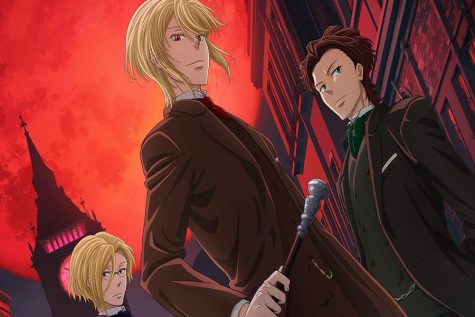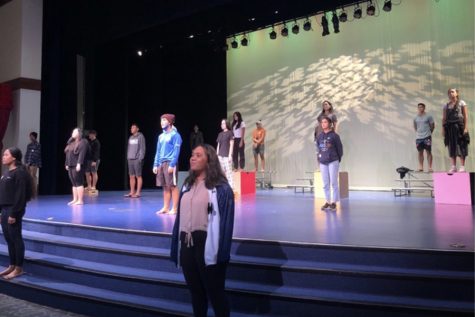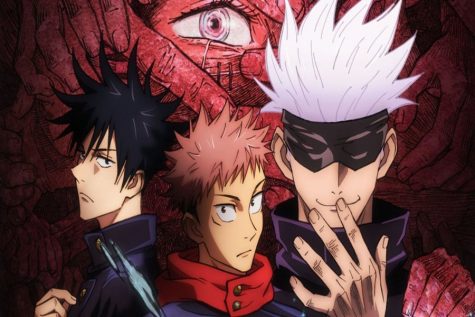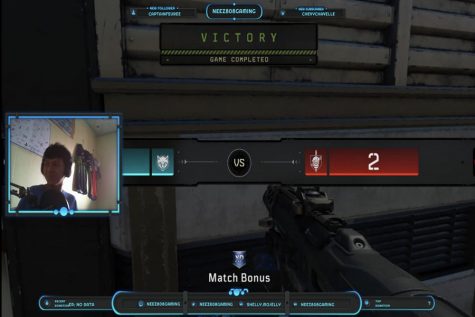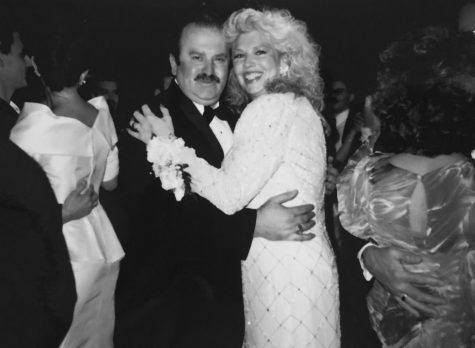‘Power and Folly’: Japanese satire plays Monday
Photo by Power and Folly Website
Performers Qiaoer Zheng and Jennifer M. Yoo in ‘Two Great Lords,’ one of three kyōgen pieces in ʻPower and Folly,ʻ playing Monday, May 1 at 6:00 p.m. in Keōpūolani Hale. The play is free and open to the public.
The University of Hawai‘i at Mānoa’s Department of Theatre and Dance is proud to present, Power and Folly: Japanese Satire for the 21st Century in Keōpūolani Hale, Monday, May 1 at 6:00 p.m..
During the day, the actors will be conducting lecture demonstrations for select Kamehameha Maui during school on Monday and Tuesday.
Performed in a 600 year-strong comedic form called kyōgen, which is still popular today, this show is directed by Professor of Theatre Julie A. Iezzi, in collaboration with three visiting master kyōgen artists from Japan.
The performances will be comprised of two traditional kyōgen pieces and one world premiere featuring contemporary themes.
First, Two Great Lords tells the story of a pair of feudal lords who are outwitted by a passerby.
The second is the English-language premiere of Two Mountain Priests, written by guest kyōgen artist Dōji Shigeyama, in which rival mountain priests try to outdo one another in a whimsical contest of prayer.
The world premiere of Derailed, written by UHM PhD candidate Matthew Kelty, is set on Oʻahu and shines a satirical light on the Honolulu Rail Transit Project and its impact on the island and its people.
The production is united by a theme of power and folly as they both thrive in an environment of overconfidence and pride.
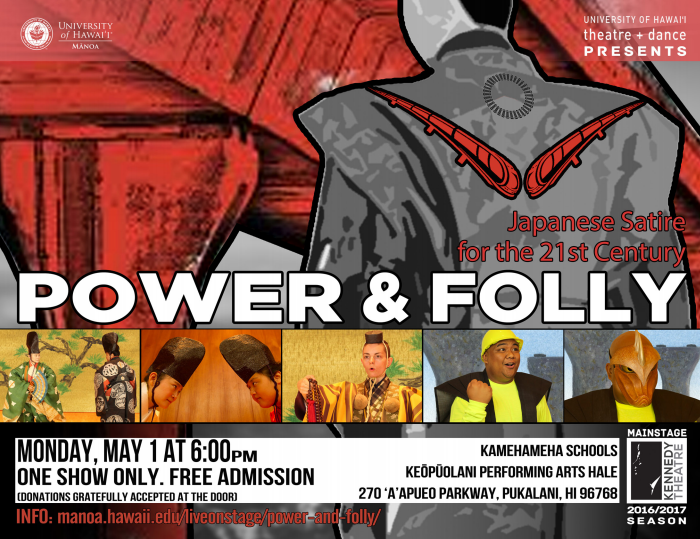
Kyōgen is perhaps the least familiar Japanese theatre form to Western audiences. Finding roots in the 13th century, kyōgen was largely used as comedic entertainment for commoners at festivals. However, as the form developed, it came to have renown and respect, eventually embedding itself within noh plays, not unlike the satyr plays of ancient Greece. However, while satyr plays were incredibly bawdy, kyōgen plays were comic and satirical, poking fun at those in power. Much of its sharp edges were sanded, however, during the two and a half centuries that noh and kyōgen served as the ceremonial entertainment for the Tokugawa shogunate. While this samurai patronage enabled polish, it encouraged codification.
With the return of the emperor to power in the Meiji Period (1868-1912), kyōgen lost patronage and languished for several decades. Bolstered initially by a renewed sense of post WWII nationalism in the 1930s, kyōgen was lauded for its spirit of the commoner, paralleling new democratic ideals. Kyōgen actors also took the lead in breaking traditional boundaries, bringing great popularity that led to “kyōgen booms.”
This production would not be possible without the guidance of three master artists. The first artist, Shigeyama Akira, was born into the Kyoto-based Shigeyama family of the Ōkura School of kyōgen. He trained under his grandfather, Sensaku III, making his stage debut before he was three years old. While maintaining the traditional family art of kyōgen, Akira has also followed in the footsteps of his father, Sennojō II, who was among the first kyōgen actors in the post WWII era to engage in experimental works, collaborating with contemporary artists and working in cross-genre performances. Akira was the senior artist in residence for the 2001-02 and 2006-07 Kyōgen Training, Production and Outreach Programs at UHM. This will be his third production with the University of Hawai’i at Mānoa.
The second artist, Shigeyama Dōji, studied under his grandfather, Sennojō II, and later his father, Akira. Like his father and grandfather, Dōji also utilizes his kyōgen skills beyond the traditional kyōgen borders. Educated in international schools within Japan and bilingual in English and Japanese, he creates and performs in bilingual kyōgen. Dōji was also an artist in residence for the 2001-02 and 2006-2007 Kyōgen Training, Production and Outreach Programs at UHM, and is returning for his third residency.
The third visiting artist-collaborator, Kitazawa Hideta, is a second-generation woodcarving artist from Tokyo who began studying under his woodcarver father, Kitazawa Ikkyō, after graduating from university in 1991. His masks are in the collections of the Nomura Manzō kyōgen family as well as the Umewaka Rokurō and Oshima Noh families, and have been used in traditional and newly written Noh and Noh-inspired plays performed in the U.S., Japan, Europe and Asia. In the fall of 2016, Kitazawa conducted a mask-carving workshop for UHM students and has carved masks for Power and Folly.
When asked about her motivations for Power and Folly, Iezzi responded, “Everyone at least recognizes kabuki or noh, but kyōgen often doesn’t get the recognition it deserves. I hope that this production changes that. Kyōgen has a power in it. Its satire allows people to poke fun at those in power and keep a balance. In the United States, now more than ever, we have to remember that it’s good and permissible to poke fun at those in charge, to question and critique.”
While tickets were necessary for mainstage performances of Power and Folly: Japanese Satire for the 21st Century at the university’s Kennedy Theatre, admission to the Maui performance is free, but a donation to the group is encouraged.



